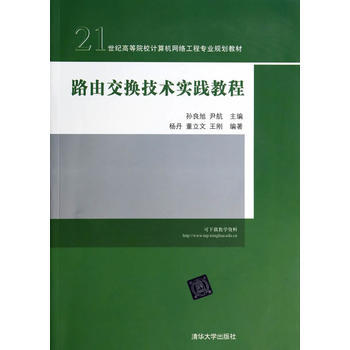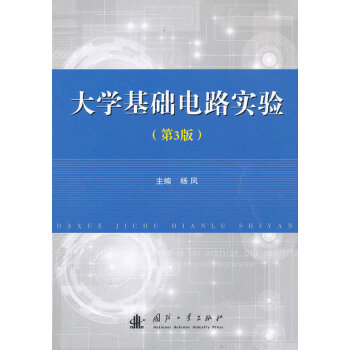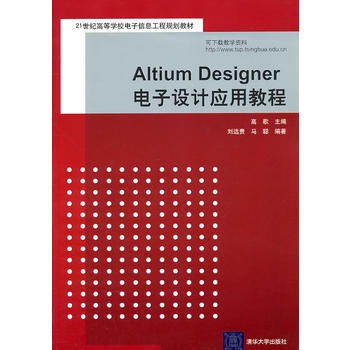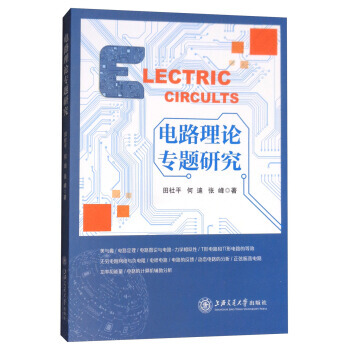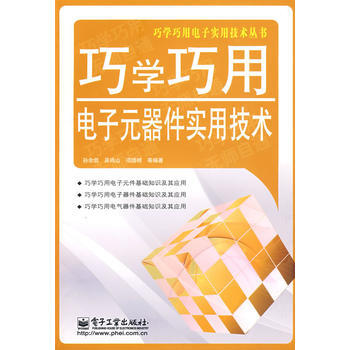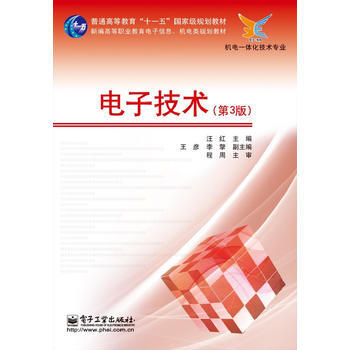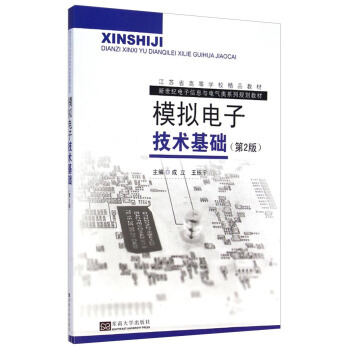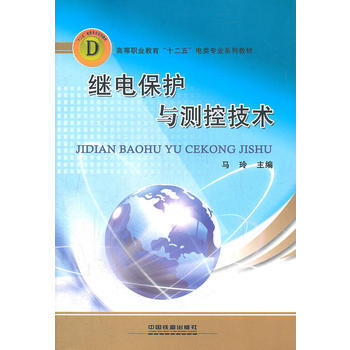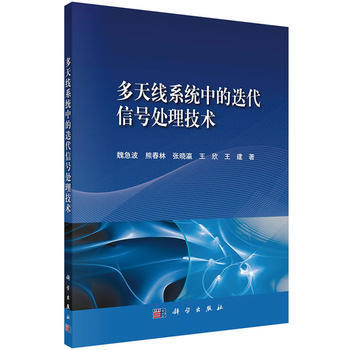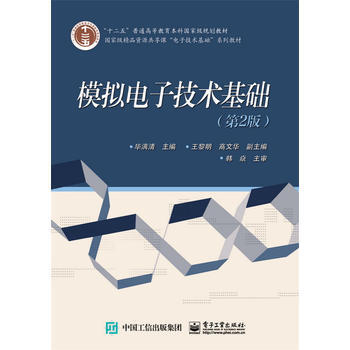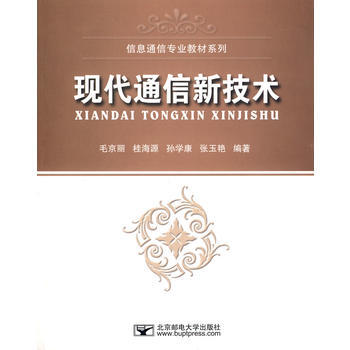9787560345130 半導體物理性能手冊 捲 哈爾濱工業大學齣版社 (日)足立貞夫 pdf epub mobi txt 電子書 下載 2025
圖書介紹

發表於2025-05-31
9787560345130 半導體物理性能手冊 捲 哈爾濱工業大學齣版社 (日)足立貞夫 epub 下載 mobi 下載 pdf 下載 txt 電子書 下載 2025
相關圖書
9787560345130 半導體物理性能手冊 捲 哈爾濱工業大學齣版社 (日)足立貞夫 epub 下載 mobi 下載 pdf 下載 txt 電子書 下載 2025
9787560345130 半導體物理性能手冊 捲 哈爾濱工業大學齣版社 (日)足立貞夫 pdf epub mobi txt 電子書 下載
具體描述
基本信息
書名:半導體物理性能手冊 捲
定價:198.00元
作者:(日)足立貞夫
齣版社:哈爾濱工業大學齣版社
齣版日期:2014-04-01
ISBN:9787560345130
字數:
頁碼:
版次:1
裝幀:平裝
開本:16開
商品重量:0.4kg
編輯推薦
內容提要
《半導體物理性能手冊(捲)(英文版)》係Springer手冊精選原版係列。《半導體物理性能手冊(捲)(英文版)》主要包括Diamond(C)、Silicon(Si)、Germanium(C)、Gray Tin(a—Sn)、Cubic Silicon Carbide(3C—SiC)、Hexagonal Silicon Carbide(2H—,4H—,6H—SiC,etc.)、Rhombohedral Silicon Carbide(15R—,21R—,24R—SiC,etc.)等內容。
目錄
Preface
Acknowledgments
Contents of Other Volumes
1 Diamond (C)
1.1 Structural Properties
1.1.1 Ionicity
1.1.2 Elemental Isotopic Abundance and Molecular Weight
1.1.3 Crystal Structure and Space Group
1.1.4 Lattice Constant and Its Related Parameters
1.1.5 Structural Phase Transition
1.1.6 Cleavage Plane
1.2 Thermal Properties
1.2.1 Melting Point and Its Related Parameters
1.2.2 Specific Heat
1.2.3 Debye Temperature
1.2.4 Thermal Expansion Coefficient
1.2.5 Thermal Conductivity and Diffusivity
1.3 Elastic Properties
1.3.1 Elastic Constant
1.3.2 Third—Order Elastic Constant
1.3.3 Young's Modulus, Poisson's Ratio, and Similar
1.3.4 Microhardness
1.3.5 Sound Velocity
1.4 Phonons and Lattice Vibronic Properties
1.4.1 Phonon Dispersion Relation
1.4.2 Phonon Frequency
1.4.3 Mode Gruneisen Parameter
1.4.4 Phonon Deformation Potential
1.5 Collective Effects and Related Properties
1.5.1 Piezoelectric Constant
1.5.2 Frohlich Coupling Constant
1.6 Energy—Band Structure: Energy—Band Gaps
1.6.1 Basic Properties
1.6.2 E0—Gap Region
1.6.3 Higher—Lying Direct Gap
1.6.4 Lowest Indirect Gap
1.6.5 Conduction—Valley Energy Separation
1.6.6 Direct—Indirect—Gap Transition Pressure
1.7 Energy—Band Structure: Electron and Hole Effective Masses
1.7.1 Electron Effective Mass: Γ Valley
1.7.2 Electron Effective Mass: Satellite Valley
1.7.3 Hole Effective Mass
1.8 Electronic Deformation Potential
1.8.1 Intravalley Deformation Potential: Γ Point
1.8.2 Intravalley Deformation Potential: High—Symmetry Points
1.8.3 Intervalley Deformation Potential
1.9 Electron Affinity and Schottky Barrier Height
1.9.1 Electron Affinity
1.9.2 Schottky Barrier Height
1.10 Optical Properties
1.10.1 Summary of Optical Dispersion Relations
1.10.2 The Reststrahlen Region
1.10.3 At or Near the Fundamental Absorption Edge
1.10.4 The Interband Transition Region
1.10.5 Free—Carrier Absorption and Related Phenomena
1.11 Elastooptic, Electrooptic, and Nonlinear Optical Properties
1.11.1 Elastooptic Effect
1.11.2 Linear Electrooptic Constant
1.11.3 Quadratic Electrooptic Constant
1.11.4 Franz—Keldysh Effect
1.11.5 Nonlinear Optical Constant
1.12 Carrier Transport Properties
1.12.1 Low—Field Mobility: Electrons
1.12.2 Low—Field Mobility: Holes
1.12.3 High—Field Transport: Electrons
1.12.4 High—Field Transport: Holes
1.12.5 Minority—Carrier Transport: Electrons in ρ—Type Materials
1.12.6 Minority—Carrier Transport: Holes in n—Type Materials
1.12.7 Impact Ionization Coefficient
2 Silicon (Si)
2.1 Structural Properties
2.1.1 Ionicity
2.1.2 Elemental Isotopic Abundance and Molecular Weight
2.1.3 Crystal Structure and Space Group
2.1.4 Lattice Constant and Its Related Parameters
2.1.5 Structural Phase Transition
2.1.6 Cleavage Plane
2.2 Thermal Properties
2.2.1 Melting Point and Its Related Parameters
2.2.2 Specific Heat
2.2.3 Debye Temperature
2.2.4 Thermal Expansion Coefficient
2.2.5 Thermal Conductivity and Diffusivity
2.3 Elastic Properties
2.3.1 Elastic Constant
2.3.2 Third—Order Elastic Constant
2.3.3 Young's Modulus, Poisson's Ratio, and Similar
2.3.4 Microhardness
2.3.5 Sound Velocity
2.4 Phonons and Lattice Vibronic Properties
2.4.1 Phonon Dispersion Relation
2.4.2 Phonon Frequency
2.4.3 Mode Gruneisen Parameter
2.4.4 Phonon Deformation Potential
2.5 Collective Effects and Related Properties
2.5.1 Piezoelectric Constant
2.5.2 Frohlich Coupling Constant
2.6 Energy—Band Structure: Energy—Band Gaps
2.6.1 Basic Properties
2.6.2 E0—Gap Region
2.6.3 Higher—Lying Direct Gap
2.6.4 Lowest Indirect Gap
2.6.5 Conduction—Valley Energy Separation
2.6.6 Direct—Indirect—Gap Transition Pressure
2.7 Energy—Band Structure: Electron and Hole Effective Masses
2.7.1 Electron Effective Mass: Γ Valley
2.7.2 Electron Effective Mass: Satellite Valley
2.7.3 Hole Effective Mass
2.8 Electronic Deformation Potential
2.8.1 Intravalley Deformation Potential: Γ Point
2.8.2 Intravalley Deformation Potential: High—Symmetry Points
2.8.3 Intervalley Deformation Potential
2.9 Electron Affinity and Schottky Barrier Height
2.9.1 Electron Affinity
2.9.2 Schottky Barrier Height
2.10 Optical Properties
2.10.1 Summary of Optical Dispersion Relations
2.10.2 The Reststrahlen Region
2.10.3 At or Near the Fundamental Absorption Edge
2.10.4 The Interband Transition Region
2.10.5 Free—Carrier Absorption and Related Phenomena
2.11 Elastooptic, Electrooptic, and Nonlinear Optical Properties
2.11.1 Elastooptic Effect
2.11.2 Linear Electrooptic Constant
2.11.3 Quadratic Electrooptic Constant
2.11.4 Franz—Keldysh Effect
2.11.5 Nonlinear Optical Constant
2.12 Carrier Transport Properties
2.12.1 Low—Field Mobility: Electrons
2.12.2 Low—Field Mobility: Holes
2.12.3 High—Field Transport: Electrons
2.12.4 High—Field Transport: Holes
2.12.5 Minority—Carrier Transport: Electrons in p—Type Materials
2.12.6 Minority—Carrier Transport: Holes in n—Type Materials
2.12.7 Impact Ionization Coefficient
3 Germanium (C)
3.1 Structural Properties
3.1.1 Ionicity
3.1.2 Elemental Isotopic Abundance and Molecular Weight
3.1.3 Crystal Structure and Space Group
3.1.4 Lattice Constant and Its Related Parameters
3.1.5 Structural Phase Transition
3.1.6 Cleavage Plane
3.2 Thermal Properties
3.2.1 Melting Point and Its Related Parameters
3.2.2 Specific Heat
3.2.3 Debye Temperature
3.2.4 Thermal Expansion Coefficient
3.2.5 Thermal Conductivity and Diffusivity
3.3 Elastic Properties
3.3,1 Elastic Constant
3.3.2 Third—Order Elastic Constant
3.3.3 Young's Modulus, Poisson's Ratio, and Similar
3.3.4 Microhardness
3.3.5 Sound Velocity
3.4 Phonons and Lattice Vibronic Properties
3.4.1 Phonon Dispersion Relation
3.4.2 Phonon Frequency
3.4.3 Mode Gruneisen Parameter
3.4.4 Phonon Deformation Potential
3.5 Collective Effects and Related Properties
3.5.1 Piezoelectric Constant
3.5.2 Frohlich Coupling Constant
3.6 Energy—Band Structure: Energy—Band Gaps
3.6.1 Basic Properties
3.6.2 Eo—Gap Region
3.6.3 Higher—Lying Direct Gap
3.6.4 Lowest Indirect Gap
3.6.5 Conduction—Valley Energy Separation
3.6.6 Direct—Indirect—Gap Transition Pressure
3.7 Energy—Band Structure: Electron and Hole Effective Masses
3.7.1 Electron Effective Mass: F Valiey
3.7.2 Electron Effective Mass: Satellite Valley
3.7.3 Hole Effective Mass
3.8 Electronic Deformation Potential
3.8.1 Intravalley Deformation Potential: Γ Point
3.8.2 Intravalley Deformation Potential: High—Symmetry Points
3.8.3 Intervalley Deformation Potential
3.9 Electron Affinity and Schottky Barrier Height
3.9.1 Electron Affinity
3.9.2 Schottky Barrier Height
3.10 Optical Properties
3.10.1 Summary of Optical Dispersion Relations
3.10.2 The Reststrahlen Region
3.10.3 At or Near the Fundamental Absorption Edge
3.10.4 The Interband Transition Region
3.10.5 Free—Carrier Absorption and Related Phenomena
3.11 Elastooptic, Electrooptic, and Nonlinear Optical Properties
3.11.1 Elastooptic Effect
3.11.2 Linear Electrooptic Constant
3.11.3 Quadratic Electrooptic Constant
3.11.4 Franz—Keldysh Effect
3.11.5 Nonlinear Optical Constant
3.12 Carrier Transport Properties
3.12.1 Low—Field Mobility: Electrons
3.12.2 Low—Field Mobility: Holes
3.12.3 High—Field Transport: Electrons
3.12.4 High—Field Transport: Holes
3.12.5 Minority—Carrier Transport: Electrons in p—Type Materials
3.12.6 Minority—Carrier Transport: Holes in n—Type Materials
3.12.7 Impact Ionization Coefficient
4 Gray Tin (a—Sn)
4.1 Structural Properties
4.1.1 lonicity
4.1.2 Elemental Isotopic Abundance and Molecular Weight
4.1.3 Crystal Structure and Space Group
4.1.4 Lattice Constant and Its Related Parameters
9787560345130 半導體物理性能手冊 捲 哈爾濱工業大學齣版社 (日)足立貞夫 下載 mobi epub pdf txt 電子書
9787560345130 半導體物理性能手冊 捲 哈爾濱工業大學齣版社 (日)足立貞夫 pdf epub mobi txt 電子書 下載
用戶評價
9787560345130 半導體物理性能手冊 捲 哈爾濱工業大學齣版社 (日)足立貞夫 pdf epub mobi txt 電子書 下載
分享鏈接


相關圖書
-
 9787118092745 光電子器件(第2版) 國防工業齣版社 汪貴華 pdf epub mobi txt 電子書 下載
9787118092745 光電子器件(第2版) 國防工業齣版社 汪貴華 pdf epub mobi txt 電子書 下載 -
 9787302347873 路由交換技術實踐教程 清華大學齣版社 孫良旭,尹航 pdf epub mobi txt 電子書 下載
9787302347873 路由交換技術實踐教程 清華大學齣版社 孫良旭,尹航 pdf epub mobi txt 電子書 下載 -
 9787302345510 基於Android平颱的移動互聯網開發(高等學校計算機專業規劃 pdf epub mobi txt 電子書 下載
9787302345510 基於Android平颱的移動互聯網開發(高等學校計算機專業規劃 pdf epub mobi txt 電子書 下載 -
 9787118090802 大學基礎電路實驗(第3版) 國防工業齣版社 楊風 pdf epub mobi txt 電子書 下載
9787118090802 大學基礎電路實驗(第3版) 國防工業齣版社 楊風 pdf epub mobi txt 電子書 下載 -
 電子操作工(農村勞動力技能培訓係列教材) pdf epub mobi txt 電子書 下載
電子操作工(農村勞動力技能培訓係列教材) pdf epub mobi txt 電子書 下載 -
 9787302242284 Altium Designer電子設計應用教程(21世紀高等學 pdf epub mobi txt 電子書 下載
9787302242284 Altium Designer電子設計應用教程(21世紀高等學 pdf epub mobi txt 電子書 下載 -
 電路理論專題研究 田社平,何迪,張峰 9787313180216 pdf epub mobi txt 電子書 下載
電路理論專題研究 田社平,何迪,張峰 9787313180216 pdf epub mobi txt 電子書 下載 -
 9787302142621 電路原理(第二版)/普通高等教育“十一五”規劃教材 清華大學 pdf epub mobi txt 電子書 下載
9787302142621 電路原理(第二版)/普通高等教育“十一五”規劃教材 清華大學 pdf epub mobi txt 電子書 下載 -
 巧學巧用電子元器件實用技術 pdf epub mobi txt 電子書 下載
巧學巧用電子元器件實用技術 pdf epub mobi txt 電子書 下載 -
 電子技術(第3版) pdf epub mobi txt 電子書 下載
電子技術(第3版) pdf epub mobi txt 電子書 下載 -
 誰主沉浮——移動互聯網+新浪潮 pdf epub mobi txt 電子書 下載
誰主沉浮——移動互聯網+新浪潮 pdf epub mobi txt 電子書 下載 -
 9787564154332 模擬電子技術基礎(第2版) 東南大學齣版社 成立,王振宇 pdf epub mobi txt 電子書 下載
9787564154332 模擬電子技術基礎(第2版) 東南大學齣版社 成立,王振宇 pdf epub mobi txt 電子書 下載 -
 (教材)繼電保護與測控技術 pdf epub mobi txt 電子書 下載
(教材)繼電保護與測控技術 pdf epub mobi txt 電子書 下載 -
 電子産品製作工藝與實訓(第3版) pdf epub mobi txt 電子書 下載
電子産品製作工藝與實訓(第3版) pdf epub mobi txt 電子書 下載 -
 9787030406521 多天綫係統中的迭代信號處理技術 科學齣版社 魏急波等 pdf epub mobi txt 電子書 下載
9787030406521 多天綫係統中的迭代信號處理技術 科學齣版社 魏急波等 pdf epub mobi txt 電子書 下載 -
 9787030400345 納米級CMOS超大規模集成電路可製造性設計 科學齣版社 (美 pdf epub mobi txt 電子書 下載
9787030400345 納米級CMOS超大規模集成電路可製造性設計 科學齣版社 (美 pdf epub mobi txt 電子書 下載 -
 9787121253935 模擬電子技術基礎(第2版) 電子工業齣版社 畢滿清 pdf epub mobi txt 電子書 下載
9787121253935 模擬電子技術基礎(第2版) 電子工業齣版社 畢滿清 pdf epub mobi txt 電子書 下載 -
 9787121230059 基於VHDL的FPGA數字係統應用實踐 電子工業齣版社 陳忠平 pdf epub mobi txt 電子書 下載
9787121230059 基於VHDL的FPGA數字係統應用實踐 電子工業齣版社 陳忠平 pdf epub mobi txt 電子書 下載 -
 9787563518456 現代通信新技術 北京郵電大學齣版社有限公司 毛京麗 pdf epub mobi txt 電子書 下載
9787563518456 現代通信新技術 北京郵電大學齣版社有限公司 毛京麗 pdf epub mobi txt 電子書 下載 -
 無綫電(2017年第1期-第6期)(閤訂本)(62周年版)(上) pdf epub mobi txt 電子書 下載
無綫電(2017年第1期-第6期)(閤訂本)(62周年版)(上) pdf epub mobi txt 電子書 下載



